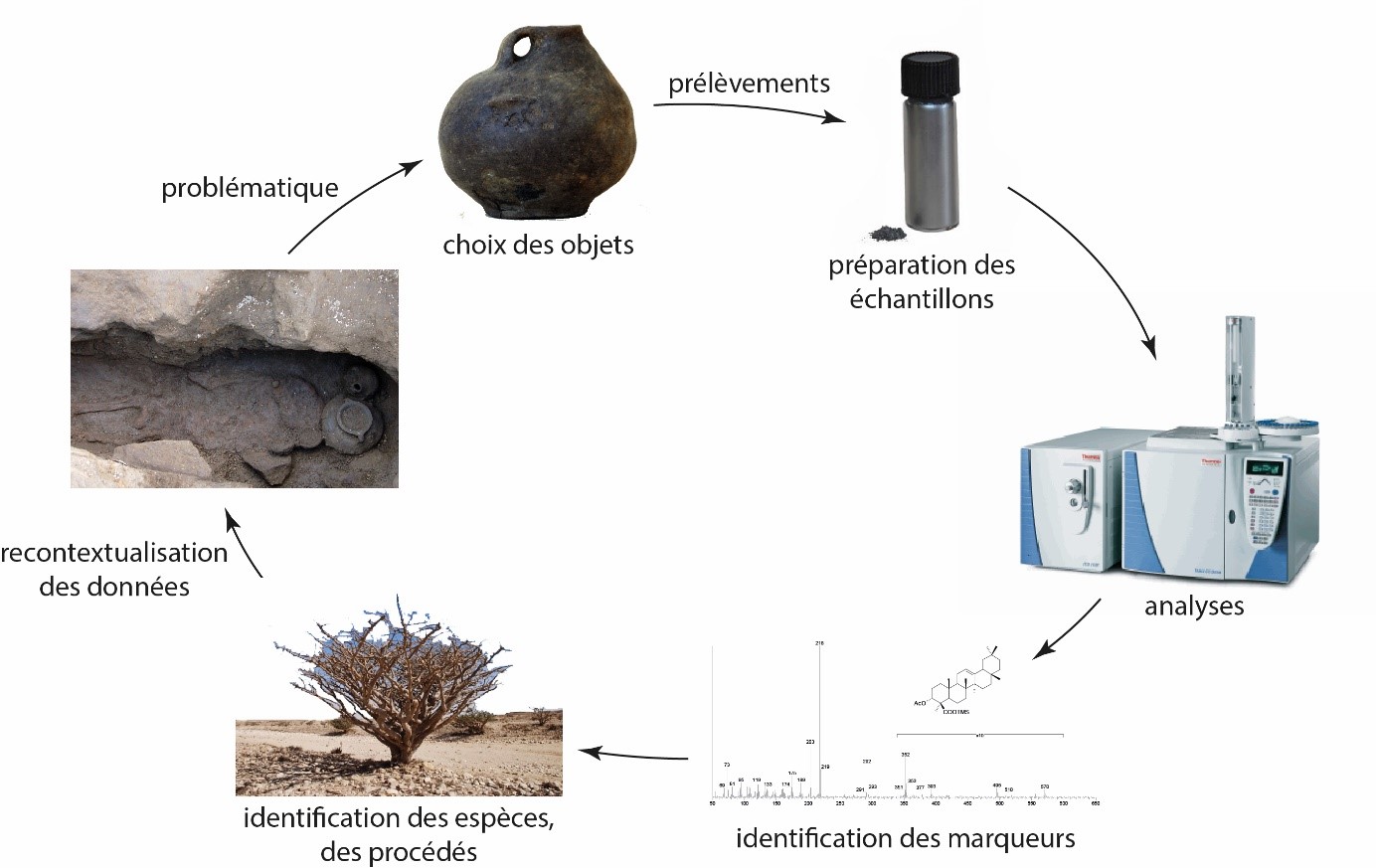
Publications
Bien que structure privée, le LNG publie ses travaux de recherche dans différents types de revues :
- des revues internationales anglo-saxonnes à referee : découvertes majeures, développement méthodologique en chimie
- des revues d'archéologie à comité de lecture : application des analyses aux recherches en archéologie, actes de congrès
- des journaux destinés aux conservateurs et restaurateurs sur des problématiques et des développements méthodologiques précis
- des catalogues d'exposition des musées nationaux
- des revues de vulgarisation destinées aux scientifiques ou au grand public.
Quelques articles phares, l'essentiel des articles étant présentés dans les pages thématiques "publications" :


Prehistoric wine-making at Dikili Tash (Northern Greece): Integrating residue analysis and archaeobotany
N. Garnier, S. M. Valamoti

Identifier les traces de vin archéologique : des structures de production aux vases à boire. Un bilan des méthodologies et des apports de l’analyse chimique organiques
N. Garnier
.jpg)
Analysis of archaeological triacylglycerols by high resolution nanoESI, FT-ICR MS and IRMPD MS/MS: Application to 5th century BC–4th century AD oil lamps from Olbia (Ukraine).
Garnier N., Rolando C., Høtje J. M., Tokarski C.

Characterization of thermally assisted hydrolysis and methylation products of polyphenols from modern and archaeological vine derivatives using gas chromatography–mass spectrometry
Nicolas Garnier, Pascale Richardin, Véronique Cheynier, Martine Regert
If some ceramics, such as vinary amphorae attest the consumption and trade of wine in the Roman world, the first wine productions in Occident often stay undocumented. Chemical analysis of organic materials preserved in archaeological vessels is the only way to bring new lights about the elaboration and the consumption of this fermented beverage. To determine the preservation state of wine and other grape derivatives residues, we proceeded to in situ tetramethylammonium hydroxide (TMAH) treatment followed by thermally assisted hydrolysis and methylation—gas chromatography—mass spectrometry (THM–GC–MS). The objectives of the study were (i) the understanding of the pyrolytic mechanisms of proanthocyanidins and (ii) the assessment of the usefulness of thermochemolysis for the identification of phenolic markers from polymeric solid deposit in modern wine bottle and Roman amphorae. THM–GC–MS was revealed to be an efficient method for the characterization of fruit derivatives even ifmixed with another organic material, such as pitch used to ensure thewatertightness of the ceramic container. The preservation of tannins during millennia in archaeological context is here enlightened for the
first time by using analytical pyrolysis. The proposed identification of vinary residues is now based on the detection of the association of more than 30 pyrolytic markers derived from di- and trimethoxylated benzenoid compounds. THM–GC–MS represents a newmethod for the rapid detection of wine traces in ancient ceramics, adapted to tiny samples (<0.1 mg), allowing to precise the role and function of pottery during antiquity.

Characterization of archaeological beeswax by electron ionization and electrospray ionization mass spectrometry
Garnier N., Cren-Olive C., Rolando C., Regert M.
